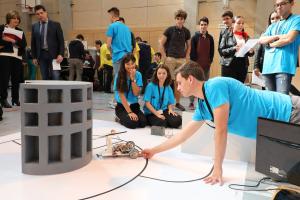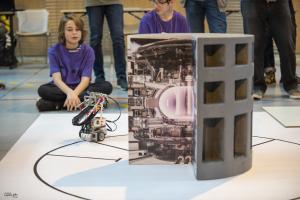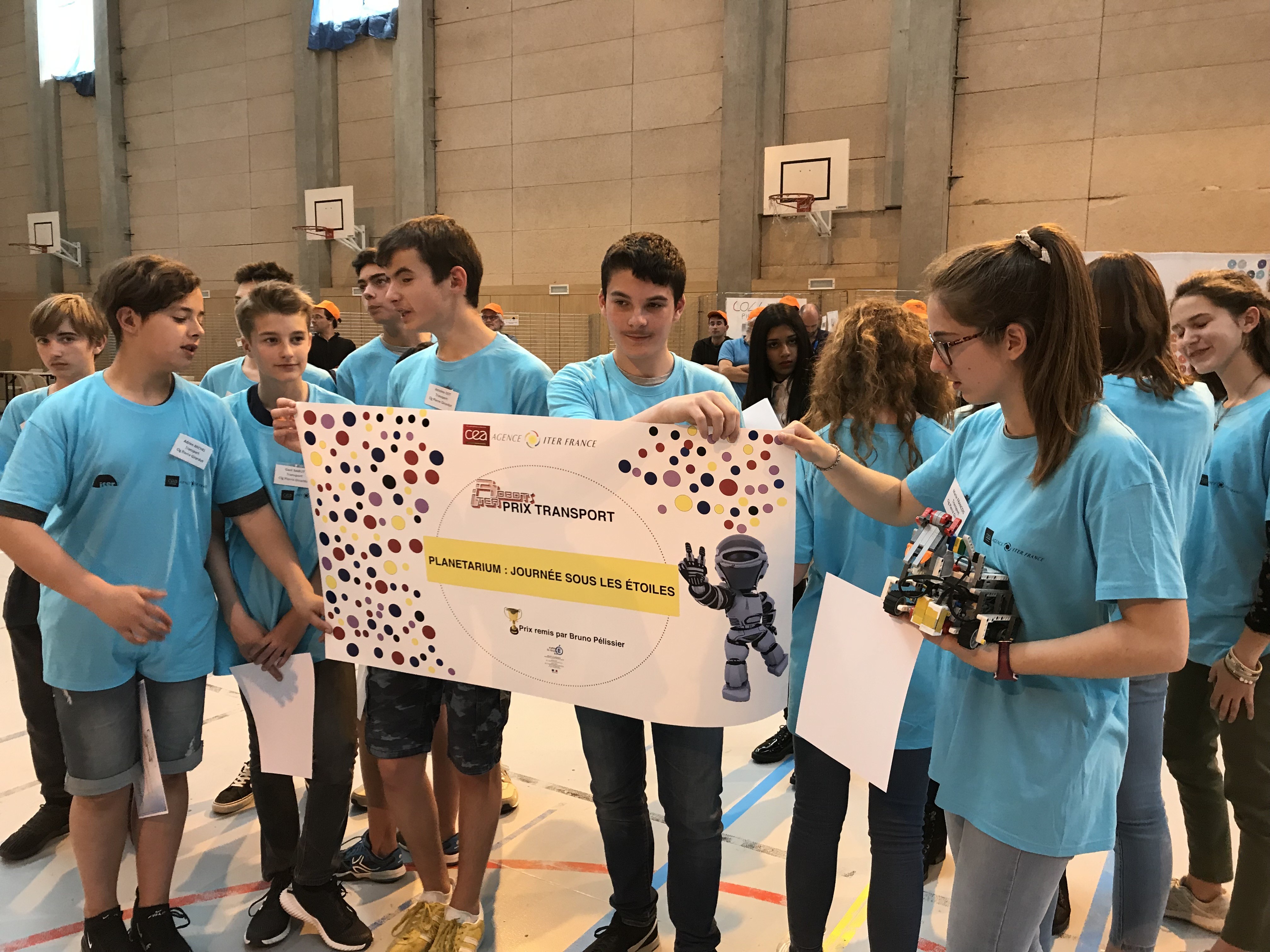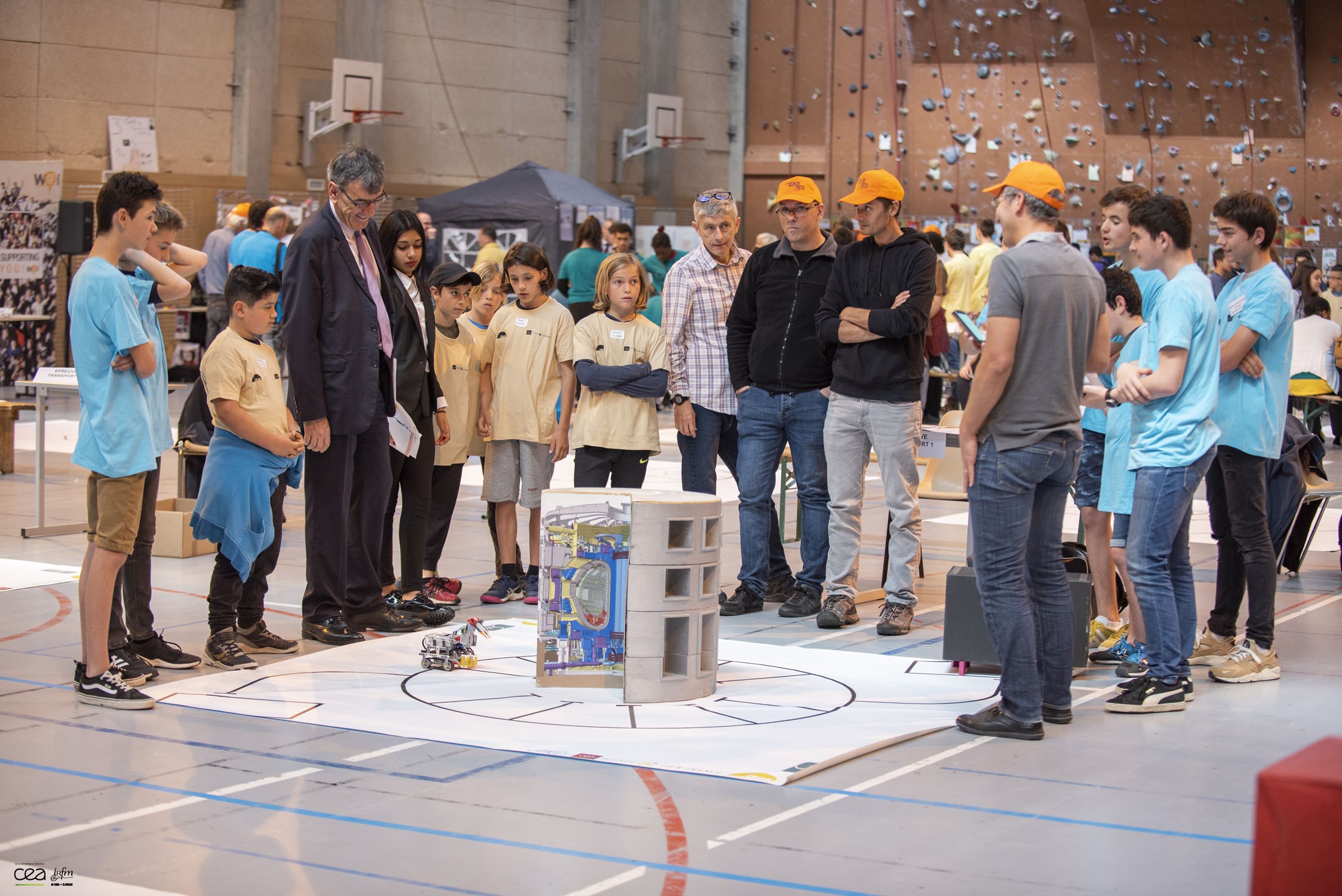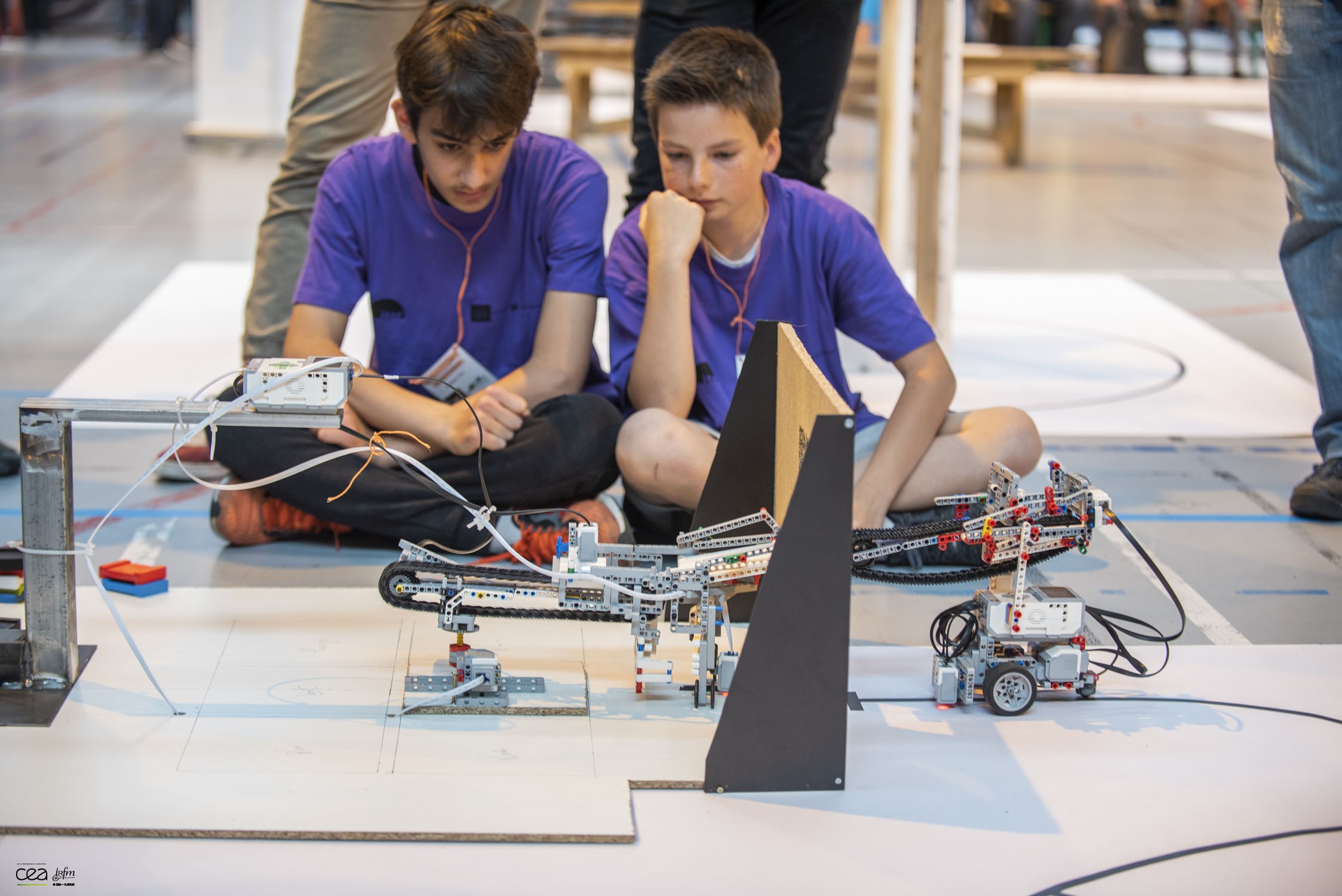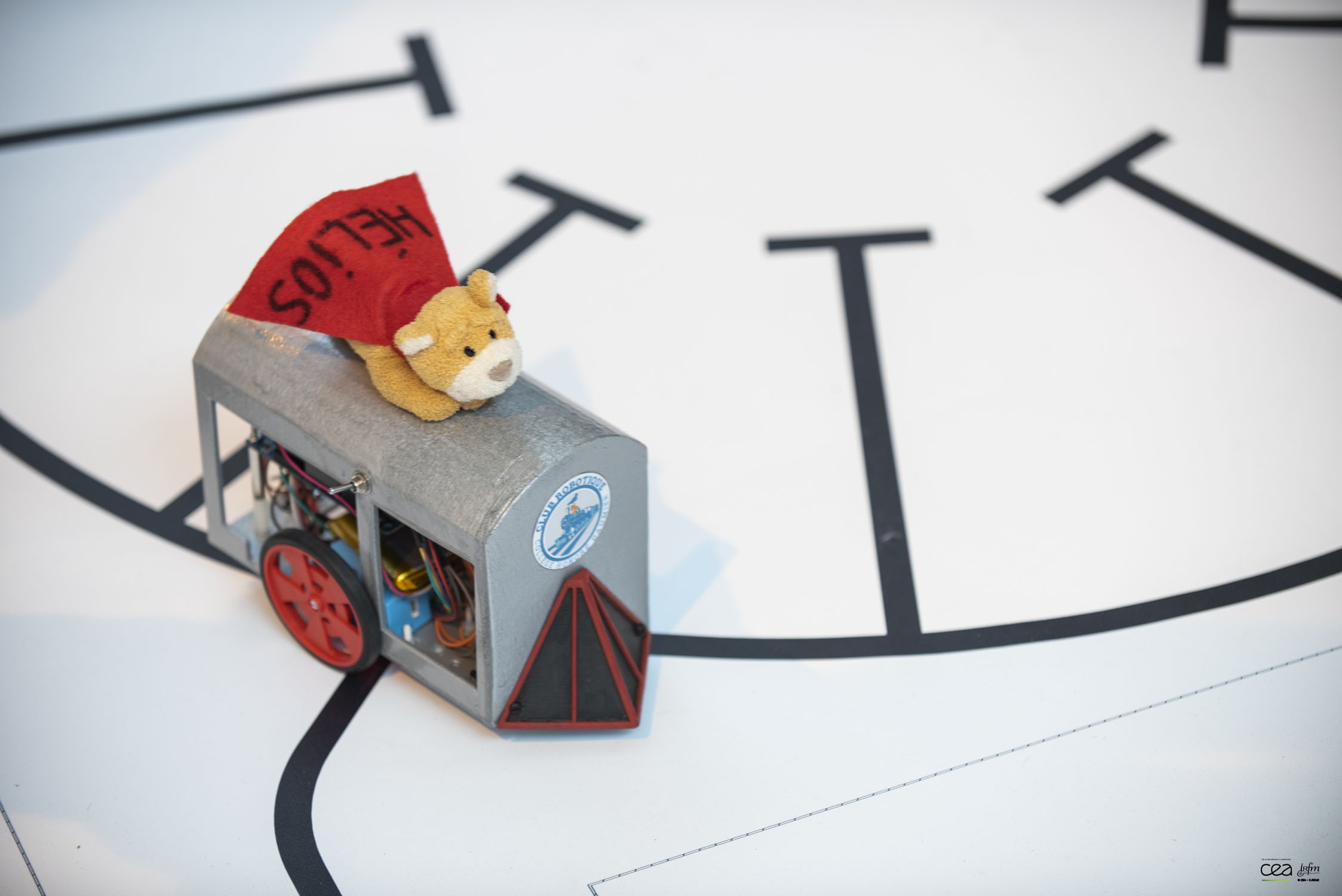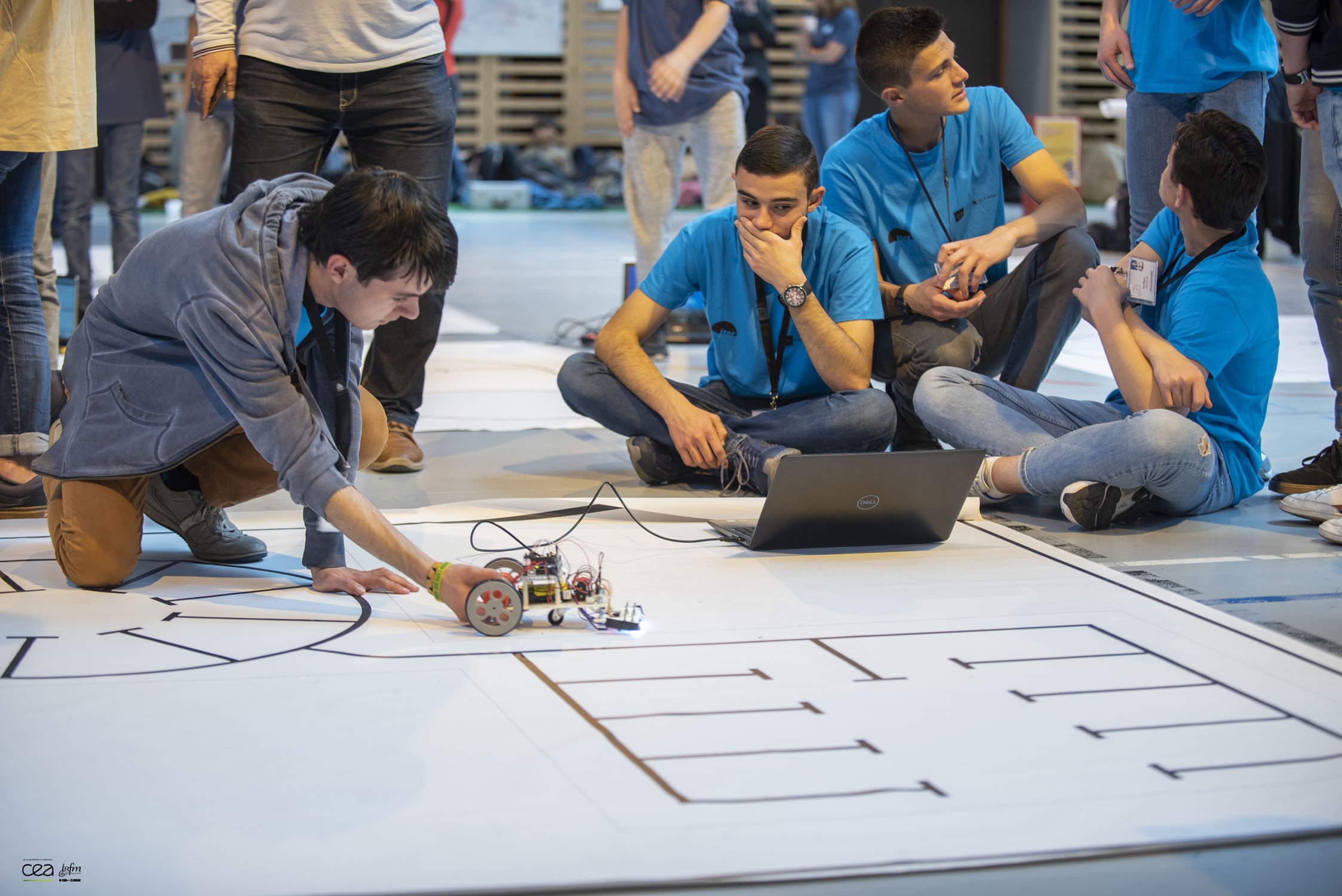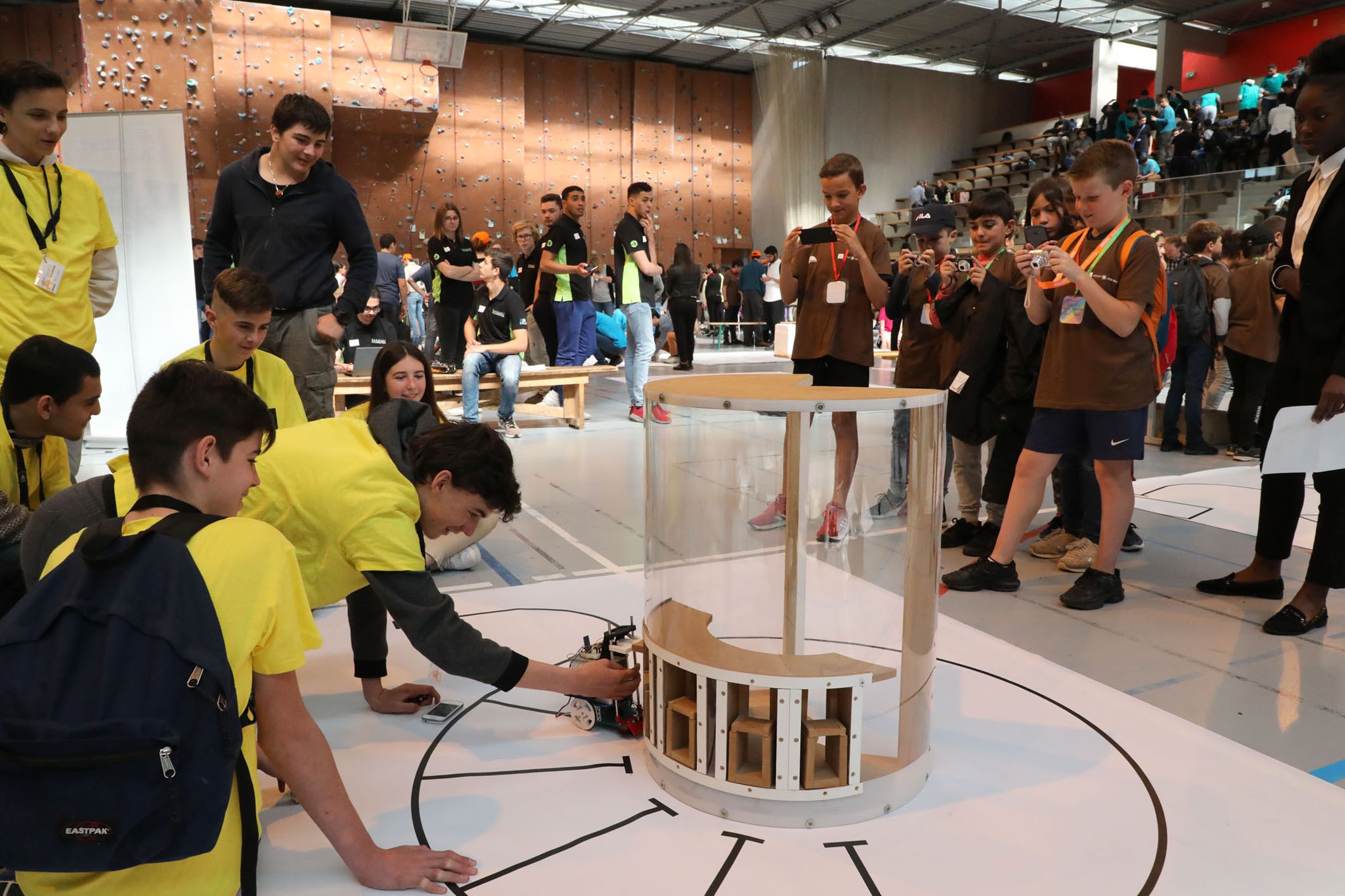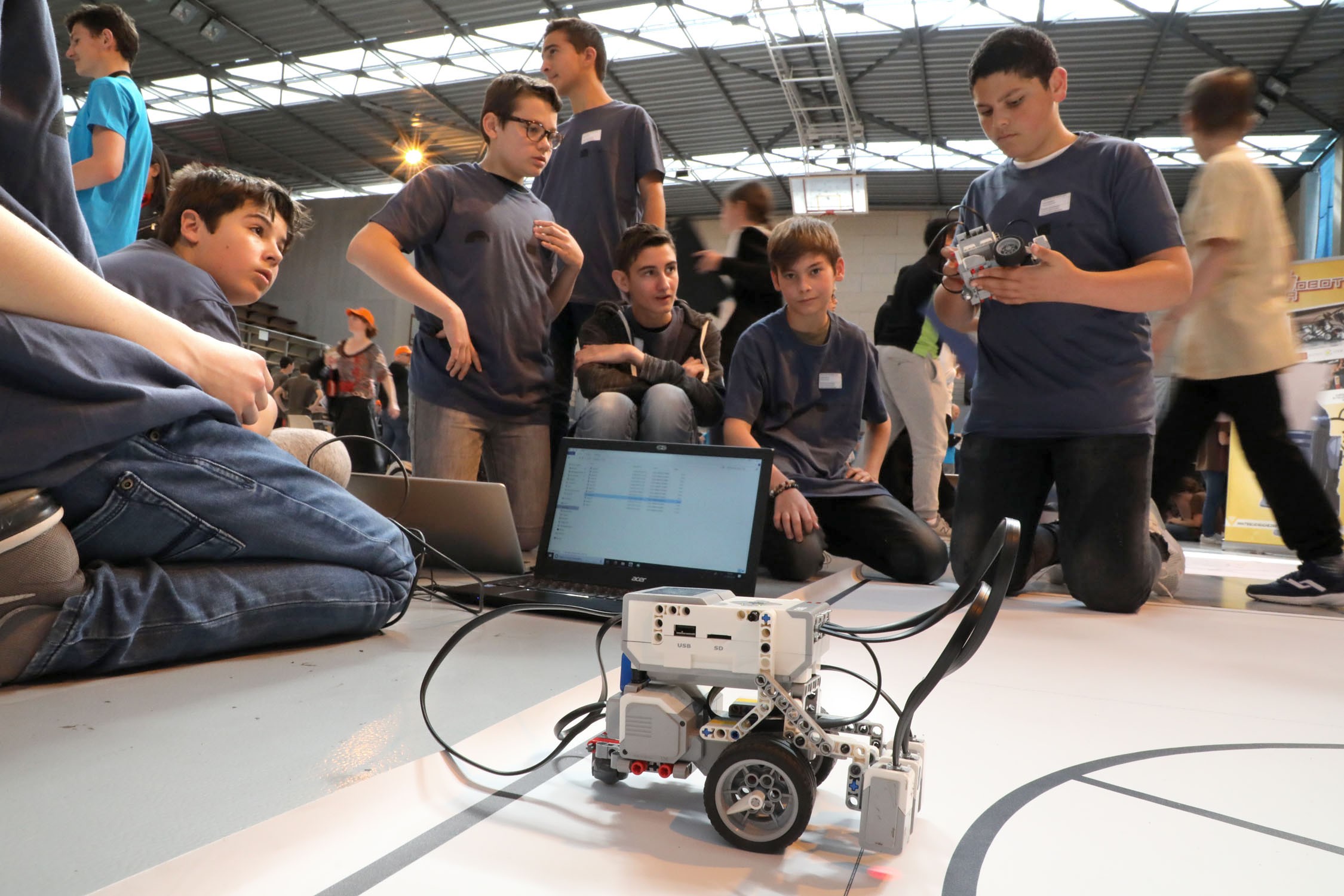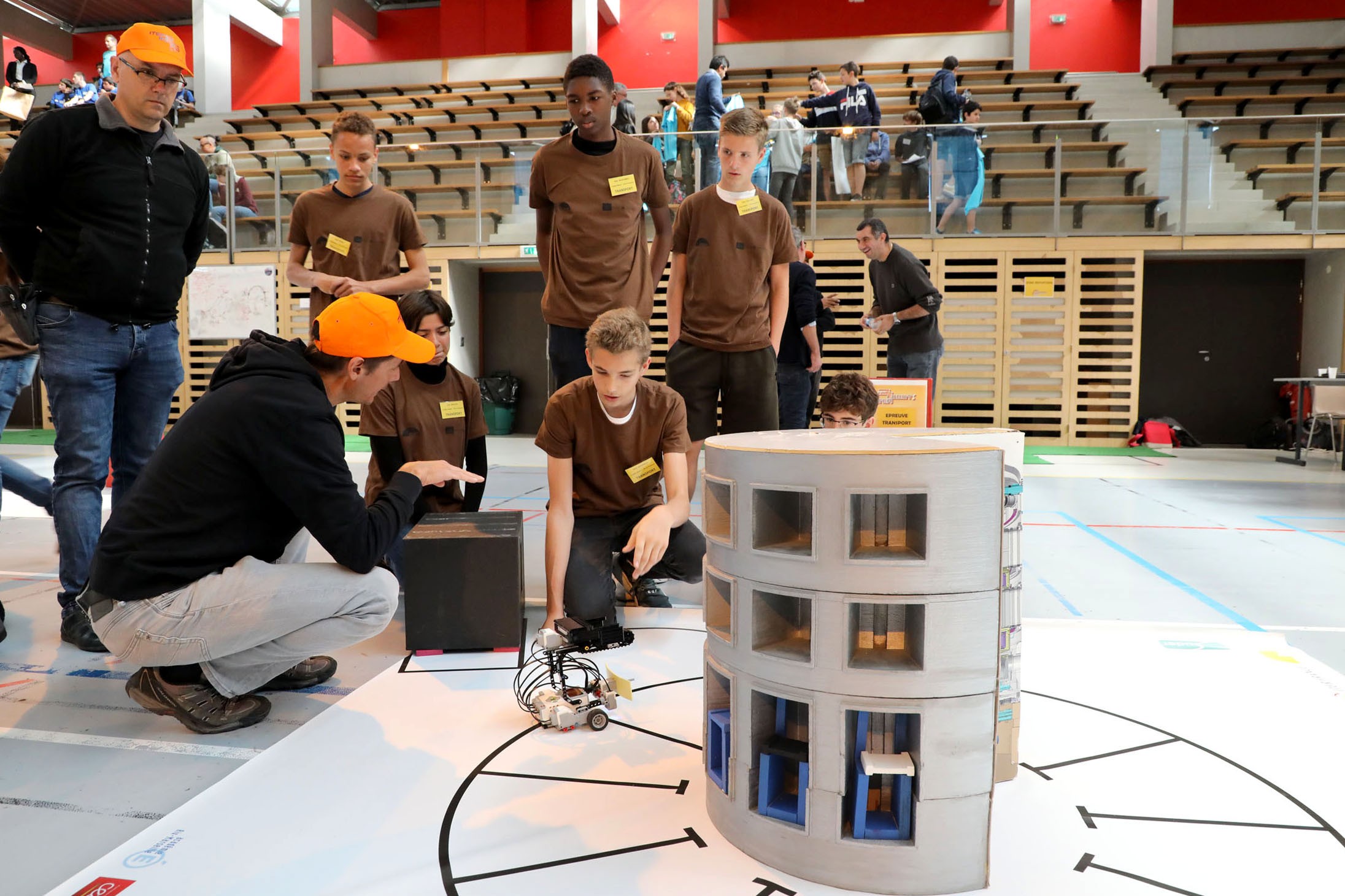8th ITER Robots
49 teams from 29 schools
27 May 2019
-
Shira Tabachnikoff
Upon entering the gymnasium at the Lycée des Iscles, you can feel the energy. Seven hundred students, pulsating music, sounds of triumph (and disappointment). There is no doubt—ITER Robots are back in town.
The ITER Robots competition is open to schools across the south of France. The challenge is to build a small robot to simulate a maintenance situation inside the ITER Tokamak—for example lifting a component and depositing it in one of the Tokamak access ports.
Each participating school can be identified by the colour of its T-shirt, and the gym seems lit with a vibrant rainbow of excitement. Lying on the floor, hunched over a robot made from LEGO Mindstorm components, a student tinkers with some final adjustments, listening intently to feedback from one of the facilitators in an orange cap. "The lighting is different in the gym here than it was in our school," he says with some trepidation. This is a common theme—that a last-minute surprise during the final competition derails months of hard work and practice.
The process of creating them takes months of planning and execution, and of course, a dedicated teacher to oversee the process and keep the team spirit alive. The teachers clearly enjoy watching their pupils in action, and take the lead in helping them to prepare for their turn to display what they have learned. This is the eighth ITER Robots competition to be held at the Lycée des Iscles, and it boasts the highest-ever number of participants: 700 students (49 teams) from 29 schools.
The student teams have each built a small robot to simulate a maintenance situation inside the future ITER Tokamak machine—namely the remote handling of components that need replacement or refurbishment.
The process of creating them takes months of planning and execution, and of course, a dedicated teacher to oversee the process and keep the team spirit alive. The teachers clearly enjoy watching their pupils in action, and take the lead in helping them to prepare for their turn to display what they have learned. This is the eighth ITER Robots competition to be held at the Lycée des Iscles, and it boasts the highest-ever number of participants: 700 students (49 teams) from 29 schools.
Forty-nine teams from 29 French schools participated in a year-long technology project that culminated at the final on 21 May at the Lycée des Iscles in Manosque. © Christophe Roux - IRFM-CEA
The contest was conceived originally by Agence Iter France, with the participation of engineers from the ITER Organization and the French Alternative Energies and Atomic Energy Commission (CEA). It is now supported by the French Ministry of Education, which has accredited the teaching modules of this competition and has made them available to all schools through its website.
Each of the four challenges—Ways, Transport, Pick and Place, and Cooperate—focuses on tasks that the robotic systems at ITER will perform, ranging from following predefined trajectories ... to transporting components from within the Tokamak to refurbishment workshops ... to operating two robots simultaneously to perform a single task. In addition, the teams are evaluated on their communication skills and knowledge about fusion.
It is hard work, but the pay-off is worth it. According to organizer Sylvie André from Agence Iter France, the objective is "not about winning, but about participating, to enjoy working in a team and to succeed at making your own robot." If this is the objective, clearly all of the teams are winners.

